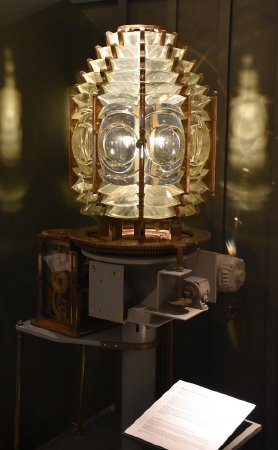Description:
Tree Point Lighthouse Lens
Lighthouses are symbols of security and safety, marking important approaches to land and warning mariners of hazards along the coastline. At the turn of the 20th century, commerce in Alaskan waters was rapidly increasing. A series of gold rushes and the growth of the salmon canning industry dramatically boosted marine traffic to Alaska. The countless vessels lost or run aground attested to the dangers of the shallow inlets, underwater rocks, and dense fog. The increase of maritime traffic necessitated the construction of navigational aids to safely negotiate the rugged coastline.
This fourth-order Fresnel lens came from the Tree Point Light Station, which was located at the entrance to Revillagigedo Channel, about 40 miles southwest of Ketchikan. The U.S. Lighthouse Service opened the station in 1904. The lens, manufactured in France, uses both refraction and reflection to concentrate light into a horizontal beam. It was originally illuminated by a kerosene vapor lamp.
A clockwork mechanism, activated by weights suspended through the center of the lighthouse, made the lens rotate once each minute. Every six seconds, one of the lens's ten bulls-eyes aligned with the viewer's eye, creating a flash. The light and rotating mechanism were electrified in 1939. In 1963, the lens was replaced with a rotating beacon. The station was manned by the Coast Guard until 1970 when automation made the personnel unnecessary.
Ketchikan Museums: Tongass Historical Society Collection, THS 2012.1.1.1

